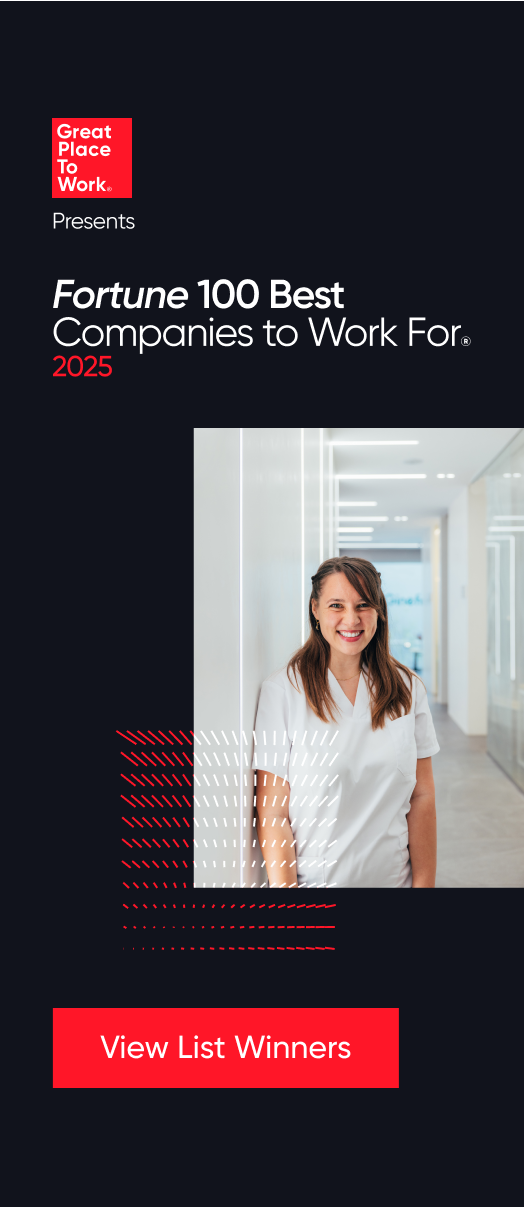Best Workplaces, Diversity & Inclusion
World Wide Technology (WWT) was already committed to diversity and inclusion before the Black Lives Matter movement’s surge in the summer of 2020. The company had spent ten consecutive years on the Fortune 100 Best Companies to Work For® list and was ranked #36 on the 2019 Best Workplaces for Diversity™ list.
Diversity, equity and inclusion (DEI) efforts were included in the company’s integrated management leadership curriculum, which trains leaders on company culture and values, and ensures those values are spread to every employee within the organization.
But the global racial reckoning that followed George Floyd’s murder pushed WWT to do more and do it fast.
“We wanted to move quickly, but we didn’t want to just respond to things. The D&I program was not something we were only dealing with for 2020,” said Jim Kavanaugh, co-founder and CEO of WWT, in our recent CEO Conversations session.
“We are committed to building this into the DNA of the company, so that 10 years from now, it is part of the foundational piece.”
Organizations must listen and learn
WWT’s executive team agreed the best way to achieve real change was to take a step back so they could listen and learn, then act. Otherwise, it’s too easy to fall into common DEI mistakes.
“Managers and leaders don’t go to school for this,” said Jim. “The feedback that we’ve received from employees, just by knowing that we care and by asking how they are doing and taking the time to listen, it’s been incredible.”
Here are five ways that WWT put its listening strategy at the forefront of its enhanced diversity and inclusion efforts.
1. Soliciting employee feedback through “listening tours”
WWT began to conduct “listening tours” to gather unfiltered feedback from employees in all areas of the business. Each session is facilitated by a senior leader, with an advisory team for support. There’s also a learning and development team to provide logistical support.
“We created these listening tours, starting with listening to our Black and African-American employees, because that was the demographic impacted the most,” said Ann Marr, executive vice-president of global human resources at WWT.
“Just listening and learning. Put yourself in somebody else’s shoes. You don’t realize what they’re going through.”
2. Connecting through storytelling
From the listening tours, stories emerged about how employees face racism in their daily lives.
“For instance, you have a Black female with Black sons, and her lesson to her sons is: ‘When you go outside, you don't put your hoodie up because you don't want to be arrested. You don't want to be stopped.’ These were stories we heard,” said Ann.
“We are committed to building this into the DNA of the company, so that 10 years from now, it is part of the foundational piece.”
WWT decided to capture these stories and use them as learning opportunities for other employees. The WWT Storytellers program emerged as a forum for employees to share their personal stories of challenge, growth, inspiration and triumph.
“It’s amazing what you can learn about different individuals just by asking,” said Jim. “We’re all different and we handle things differently. [It’s about] really allowing people to feel safe and to be able to voice what they’re dealing with.”
When employees feel safe and valued, they are more likely to make meaningful contributions to their teams, invest in their physical, mental and financial health, and seek ways to improve the local community.
3. Giving employees the lead through ERGs
Employee Resource Groups (ERGs) are voluntary, employee-led groups, typically made up of employees with a shared characteristic such as gender, ethnicity or religion. Allies may also be invited to join. The group’s purpose is to ensure a safe space for employees to grow personally and professionally while bringing their whole selves to work.
WWT already had two ERGs but has since added five more, and the executive team turned to these ERGs to act as test pilots and provide critical feedback on its newly updated DEI curriculum.
“The most important thing is it has executive leadership support,” said Anne. “We had a member of the executive team…committed to being an executive sponsor to each one of those ERGs. The important thing is having that executive-level interaction: ‘I’m not just talking, I’m doing.’”
4. Celebrating differences
In addition to serving as DEI consultants, the ERGs also hold ownership of how international holidays and cultural celebrations are recognized and honored in the workplace.
Starting in 2021, all WWT employees now receive a Personal Day of Observance that allows them to take a full day off to honor their own cultural and religious celebrations.
These days enable employees to honor dates that may not be recognized as statutory holidays where they live, such as Juneteenth, Rosh Hashanah, Diwali or Eid al-Fitr.
5. Giving back through community partnerships
To really incite systemic change, workplaces need to also look beyond their own walls, to see how they can support diversity and inclusion within the broader community.
WWT has a mentorship partnership with LaunchCode, a Missouri-based non-profit that brokers paid apprenticeships in technology for people who have the talent but lack the traditional credentials to land a technical job.
In particular, WWT is part of LaunchCode’s CoderGirl program, focused on diversifying the STEM (science, technology, engineering and math) pipeline by supporting women programmers. WWT employees serve as CoderGirl mentors. To date, four program alumni have landed full-time positions at WWT.
“I'm very happy with how the team has listened, learned and acted,” said Jim. “Our D&I is not just a one-off program. It’s foundational to who we are, how we act and how we behave.”
To get DEIB advice and company culture insights from other Best Workplaces, sign up for our monthly content newsletter and register for our next CEO Conversation.










